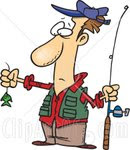 One of the keys to healthy and long lived goldfish is their diet. To understand what constitues a healthy diet, one has to understand what goldfish have evolved to eat and how they digest their food.
One of the keys to healthy and long lived goldfish is their diet. To understand what constitues a healthy diet, one has to understand what goldfish have evolved to eat and how they digest their food. In a natural body of water, goldfish (who are omnivores) would be browsing continually, eating small amounts of all sorts of foods: algae, plants, insects, insect larvae, and invertibrates.
Goldfish have nostrils located above their mouth and have a good sense of smell. The small flap of skin directs water through the front nostril opening and it flows out the back opening.
In a natural habitat, they would consume floating plants/algae, mosquito, midge fly larvae and unlucky bugs near the water's surface. Further down in the water column, they would find daphnia, tadpoles and small fish. Rooting around on the bottom, they would sift through the mud for various aquatic organisms, worms (e.g. blackworms), freshwater shrimp and snails, ingesting some mud, bacteria and fungi along the way. They would also eat submerged aquatic plants and the roots of emergent plants. Their digestive tracts have evolved to be able to digest a wide variety of foods. If it will fit in their mouth, they'll taste it and see if it's edible.
Digestion starts in the mouth where they grind their food into small particles at the back of their mouth. They also have small hollows at the back of the gill arches that trap food in the water. Mucus is secreted by the lining of the oral cavity and mixed with the food. From there, food moves down through the esophagus to what would be the stomach if they had a stomach (which they don't). Muscles in the esophagus squeeze excess water out of the food. The goldfish intestional tract is a long tube. Food gets broken down by digestive enzymes as it passes through the intestine. Proteins are broken down into amino acids. Carbohydrates are broken down into sugars. Fats are broken down into fatty acids and glycerol. These nutrients (as well as vitamins and minerals) are absorbed into the blood stream by the intestine. The last part of the intestine has lots of mucus producing cells. Undigested food comes out the back end encased in mucus and is usually a similar color to the food that was consumed. See our internal anatomy article for detailed images of his digestive system. Warning these pictures are of the internal anatomy of a goldfish and may be disturbing to some, however, I believe they will help you to have a better understanding of goldfish digestive anatomy.
Goldfish body temperature is the same as their environment. Warmer temperatures speed up metabolism and colder temperatures slow metabolism (and digestion).
There are several practical lessons to be had from from looking at how goldfish would eat in their natural habitat and from studying the digestive process.
Because of the lack of a stomach, multiple small meals are better for goldfish because that is closer to how they would eat in a natural habitat. If you feed large meals, a lot comes out the back end only partially digested which makes keeping your water happy more difficult. Lots of undigested food provides plenty of food for the bacteria that break down debris in the tank. Those bacteria consume oxygen, and release ammonia increasing the bioload on the tank and ultimately raising nitrAte levels.
Giving goldfish a variety of fresh and live foods would also mimick their natural feeding behavior more closely. For instance duckweed can be grown in in your other tanks (or even in goldie water in a tub with decent lighting) and fed to goldies daily. If you have hair algae in your other tanks, that can be fed to goldies. Fresh and frozen veggies such as squash, green peas, green beans, various greens, etc are also good additions to the diet as are various fish and shellfish (e.g. cocktail shrimp, clams, whitefish, sardines, herring, salmon, etc). Culturing redworms, daphnia, mosquito larvae, midge fly larvae, blackworms, freshwater shrimp or snails could be potential sources of live foods.
For goldfish kept outside, when the water temperature drops to 50 degrees, their digestive processes slow, so stop feeding them until the water warms back up.
Article source: http://thegab.org/Articles/GoldfishNutrition1.html

0 comments:
Post a Comment